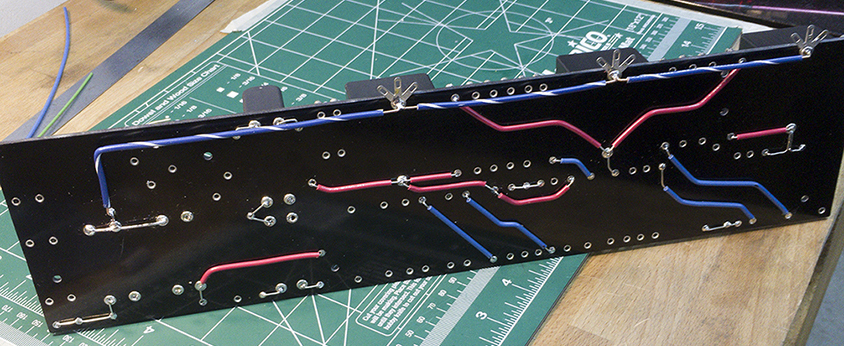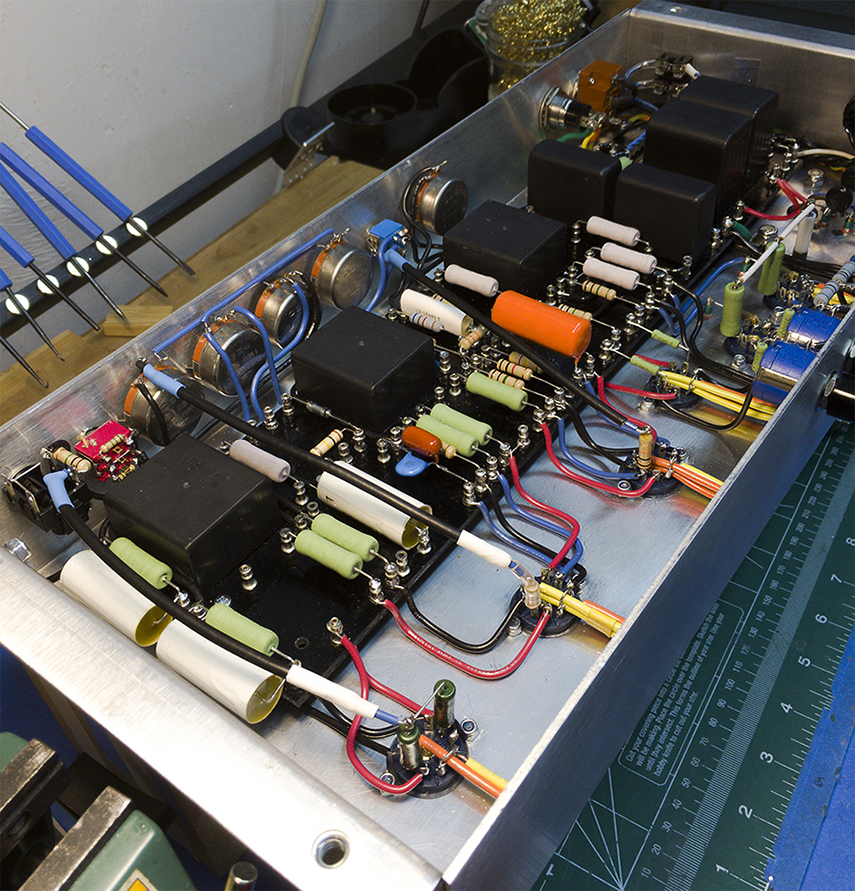Originally posted by R.G.
View Post
I can't tell you how often I wish I had a trap door access inside a chassis. I would even extend this to many turret/eyelet wired amps as well. This was especially true on my own amp when I thought it would make for a nice layout to do much of the wiring under the board. After all the careful layout I had drawn, and physical wiring was complete, I tracked down mistake I had made in the drawing where the connection was off by one turret (which coupled the next stage to the previous grid instead of plate). I was getting some strange voltage readings.... off by one friggen turret to the right. But what a pain in the ass to try and get to. If I make under board terminal to terminal wire connections it will not be done like this -


 safe assuming it's formed enough for the full forming voltage not to damage it.
safe assuming it's formed enough for the full forming voltage not to damage it.
Comment